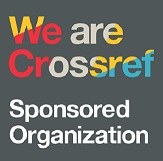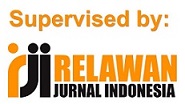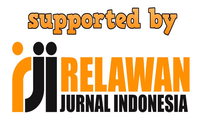EXPLORING THE TEMOKAN TRADITION IN JAVANESE WEDDINGS: AN ANTHROPOLINGUISTIC APPROACH
Abstract
This study explores the textual, contextual, and non-contextual elements of the Temokan tradition, a vital aspect of Javanese traditional wedding ceremonies. Specifically, it examines the interplay between text, co-text, and context within these ceremonial performances. Data were collected through interviews with informants and analyzed using a descriptive qualitative method combined with an ethnographic approach. The research identifies 10 distinct performances and 10 associated texts, involving 8 types of objects classified based on their co-textual features. The co-text in the Temokan tradition includes material elements such as objects used in the ceremonies, the spatial arrangement and distance between participants, and gestures that convey symbolic meaning. Contextual elements encompass ideological, social, cultural, and situational factors, illustrating the depth and richness of the tradition. These elements are further embedded with values and norms, including religious, logical, ethical, and aesthetic dimensions. Norms such as etiquette, customary practices, legal expectations, and habitual behaviors further reflect the tradition's cultural significance. From an anthropolinguistic perspective, the study highlights key performances such as Gantalan Sadak, Wiji Dadi, Wiji Suku, Sindur Binayang, Pangkon Timbang, Tanduring Pengantin, Kacar-Kucur, Dahar Kembul, Martuwi, and Sungkeman. These performances encapsulate the symbolic, cultural, and social meanings that sustain the Temokan tradition's role in preserving Javanese identity and heritage. This research contributes to understanding how linguistic and cultural practices interweave in traditional ceremonies.
Keywords
Full Text:
PDFReferences
Akhsan, E. F., Puspitorini, A., Usodoningtyas, S., & Faidah, M. (2022). Kajian nilai-nilai budaya dalam prosesi temu manten adat Jawa di Kabupaten Kediri. E-Journal, 11(1), 12–23. Retrieved from https://ejournal.unesa.ac.id/index.php/jurnal-tata-rias/article/view/44398/37757
Austin, J. L. (1962). How to do things with words. Oxford University Press.
Bauman, R. (1992). Verbal art as performance. Prospect Heights, IL: Waveland Press.
Duranti, A. (1997). Linguistic anthropology. Cambridge University Press.
Errington, J. (1988). Structure and style in Javanese: A semiotic view of linguistic etiquette (Vol. 1). New York: Cambridge University Press.
Geertz, C. (1973). The interpretation of cultures (Vol. 1). New York: Basic Books, Inc., Publisher.
Hymes, D. (1972). Toward ethnographies of communication: The analysis of communicative events.
Lusiana, L. (2021). Christian values contained in the Temu Manten ceremony in Javanese traditional marriages.
Setiawan, F. (2021). Kajian antropolinguistik dalam prosesi temu pengantin masyarakat Kabupaten Pasuruan. E-Journal, 9(2), 57–74. Retrieved from https://nosi.ac.id
Sibarani, R. (2015). Pendekatan antropolinguistik terhadap kajian tradisi lisan. Retorika: Jurnal Ilmu Bahasa, 1(1).
Sibarani, R. (2020). Anthropolinguistics as interdisciplinary approach. Journal of Anthropolinguistics, 1–8.
Van Dijk, T. A. (1985). Structures of discourse and understanding. Discourse Processes, 8(1), 1-22.
DOI: https://doi.org/10.30743/ll.v8i2.10162
Refbacks
- There are currently no refbacks.
Fakultas Sastra
Universitas Islam Sumatera Utara (UISU), Medan
Jl. Sisingamangaraja Teladan Medan 20217
Telp. (061) 7869911, e-mail: language_literacy@sastra.uisu.ac.id









